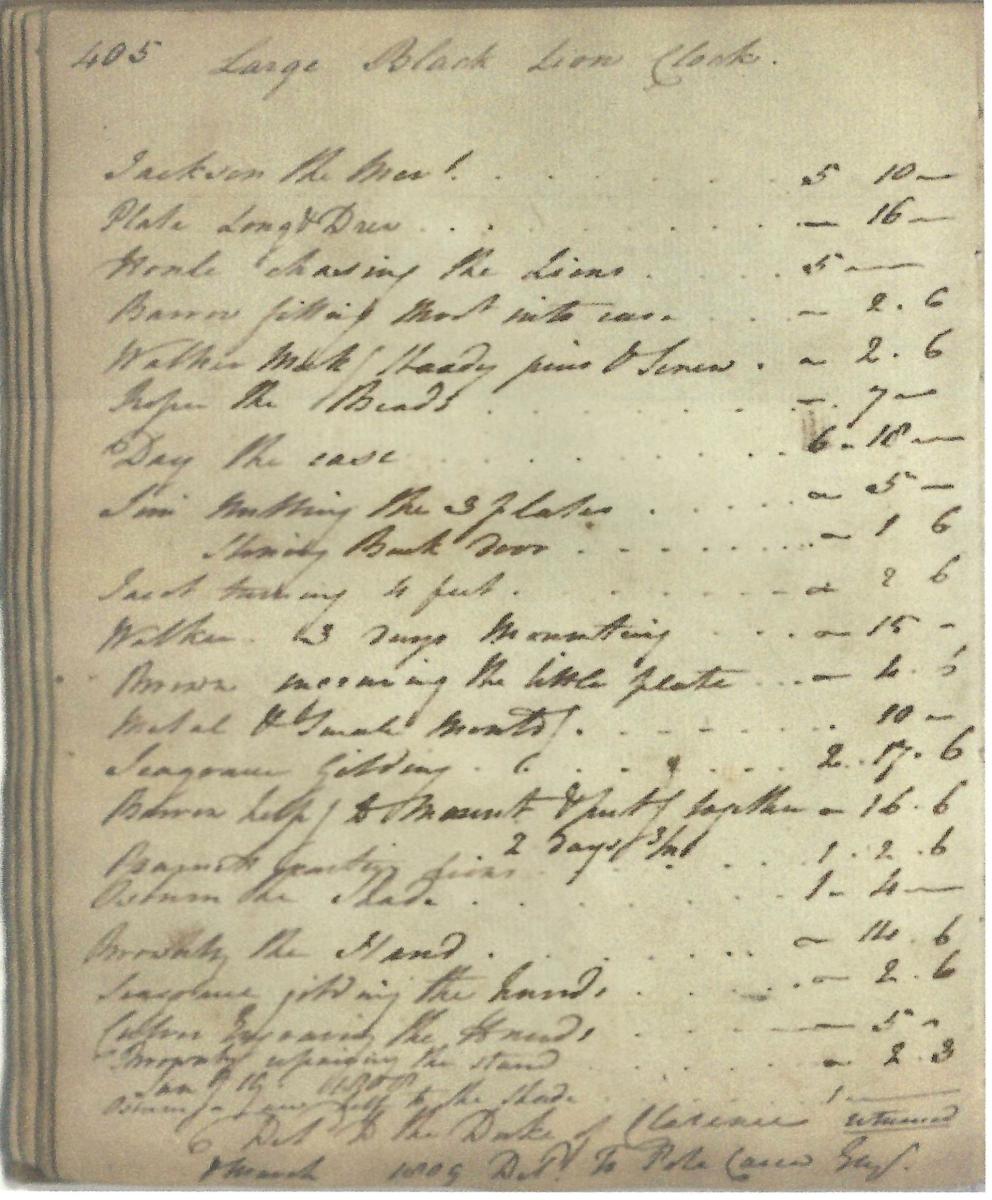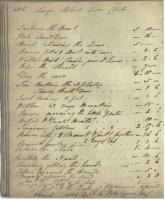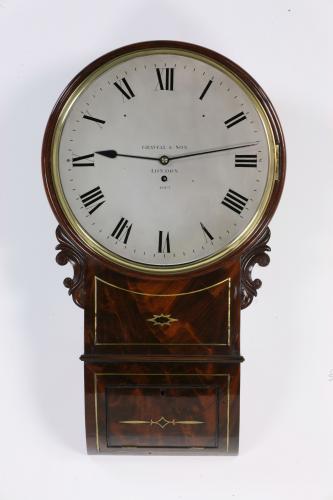

Price on application
This object is eligible for a Certificate of BADA Provenance
The BADA Standard
- Since 1918, BADA has been the leading association for the antiques and fine art trade
- Members are elected for their knowledge, integrity and quality of stock
- Our clients are protected by BADA’s code of conduct
- Our dealers’ membership is reviewed and renewed annually
- Bada.org is a non-profit site: clients deal directly with members and they pay no hidden fees
Vulliamy, No 405. An Exceptional White & Black Marble Mantel Clock with Royal Provenance. Dated 1808.
The case has a black marble base with gilded and beaded edged panels to the front and sides. Above that on both sides there are recumbent gilded lions holding gilded balls. Between the lions there is a further black marble plinth with a beautifully engrave gilded panel. This supports the white marble reeded drum shaped movement housing which is supported on well carved scrolls. The whole surmounted by a shallow gilt urn.
The white enamel dial has gold numerals and dot minute markers. It has gilded pierced hands of the style almost always used by the makers on this style of clock.
The single gut fusee movement has pendulum adjustment through the dial, half deadbeat escapement and nicely shaped back cocks for the pendulum. The backplate is signed Vulliamy London no. 405. The pendulum is also numbered 405. It has an old but non original push on brass cover for the back of the movement housing.
Restoration notes
The clock was in great original condition but the case was dirty so was cleaned .There was a very small piece of damage to the marble scroll work which we restored (we have before and after photos).The dial had minor damage around the winding hole now restored. The movement needed cleaning and overhauling, and we replaced the fusee wire with correct original style gut. We made a Vulliamy style winding key.
Provenance
Vulliamy daybook. Sold on the 19th January 1808 to The Duke of Clarence, son of George III later to become King William IV. It was later returned to Vulliamy and sold again on the 30th March 1809 to R. Pole Carew who was MP for Fowey. The clock was in the Oppenheimer collection and then remained in the family.
BENJAMIN VULLIAMY
Benjamin was probably the most widely talented and artistic member of this clockmaking family. He was born in 1747 and died in 1811. His skills not only related to his clock and watch making but also to the case work and artistic side of the business. He was granted the Royal Appointment as the King’s Clockmaker in 1773 and, although his father had sold many clocks to George III, it was Benjamin who developed the connection and gave personal advice on horological matters in which the King was keenly interested.
He is known principally for his fine ornamental clocks, many with biscuit porcelain figures and ormolu decoration in the French taste. However, he also made a number of fine regulators, one in particular made in 1775 for the Royal Family is now in the Science Museum, although another regulator is still at Buckingham Palace.
In 1781 he was admitted to the Clockmakers’ Company as an Honorary Freeman.
BENJAMIN LEWIS VULLIAMY
Benjamin Lewis Vulliamy was the last of a line of exceptional clockmakers in the Vulliamy family, the first of which was François Justin (always known as Justin Vulliamy), followed by his son Benjamin, and followed by his sons Benjamin Lewis and Justin Theodore.
Benjamin Lewis Vulliamy was born on the 25th January 1780, not a lot is known about his childhood except that he spent most of it at 68 Pall Mall. He joined his father in Pall Mall very early in life, certainly when less than 20 years of age. He received the Freedom of the Clockmakers’ Company in December 1809 and became a liveryman in January 1810 at the age of 30 and was admitted to the Court of Guild in the same year. There he served every office in the Court and was five times elected Master. In his years of service he did much to further the good reputation of the clockmakers’ trade and against increasing odds he succeeded in preserving high standards of craftsmanship which can be seen in almost all of the clocks that he produced.
Unlike his father’s main output, which was of ornamental house clocks and furnishing items, Benjamin Lewis tended to concentrate on using the very best of materials and workmanship in order to give long and trouble free life to his clocks.
The workforce that Vulliamy used were in many instances specialist craftsman or out workers. There were however a number of staff permanently employed at 68 Pall Mall. In particular were members of the Jump family who, after Vulliamy’s death in 1854, went on to found their own famous and very successful business.
Dimensions
Height: 11.25″ (23 cm) Width 11.5“(29cm) Depth 4.75” (12cm)Stock number
31928The BADA Standard
- Since 1918, BADA has been the leading association for the antiques and fine art trade
- Members are elected for their knowledge, integrity and quality of stock
- Our clients are protected by BADA’s code of conduct
- Our dealers’ membership is reviewed and renewed annually
- Bada.org is a non-profit site: clients deal directly with members and they pay no hidden fees



